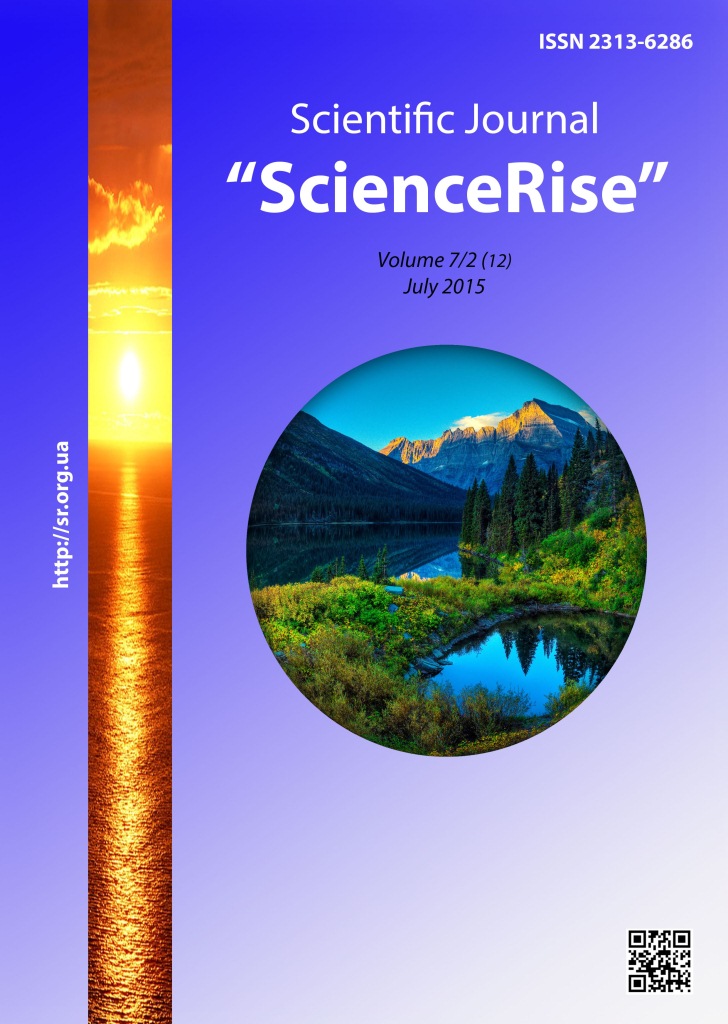Resource factor in production of quality and safe flavored food
DOI:
https://doi.org/10.15587/2313-8416.2015.47218Keywords:
essential oil, natural flavor, optical activity, preparative chromatography, cumin, dill.Abstract
Research of methods for establishing authenticity of essential oil of cumin and dill based on optical isomerism of components is presented in the article.
In modern food technology more often used frozen raw, concentrates fruit and vegetables, growing issue of healthy products and this all require the use of flavors. Synthetic flavors can be dangerous to the human body. Usage of counterfeit natural flavors is dangerous.
References
Murdoch, J., Marsden, T., Banks, J. (2000). Quality, Nature, and Embeddedness: Some Theoretical Considerations in the Context of the Food Sector*. Economic Geography, 76 (2), 107–125. doi: 10.1111/j.1944-8287.2000.tb00136.x
Akkerman, R., Farahani, P., Grunow, M. (2010). Quality, safety and sustainability in food distribution: a review of quantitative operations management approaches and challenges. OR Spectrum, 32 (4), 863–904. doi: 10.1007/s00291-010-0223-2
(Nel) Wognum, P. M., Bremmers, H., Trienekens, J. H., van der Vorst, J. G. A. J., Bloemhof, J. M. (2011). Systems for sustainability and transparency of food supply chains – Current status and challenges. Advanced Engineering Informatics, 25 (1), 65–76. doi: 10.1016/j.aei.2010.06.001
Shelavina, E. Studies of "Fine Igredients": Trends in global and domestic markets flavors. Plunging into the flavors of the world. – Available at: http://chin-ru.com/rynok-aromatizatorov/
Krichkovskaya L. V., Chernyshov S. I., Donchenko G. V. (2008). Biologicheski aktivnye masla i produkty na ih osnove (efirnye masla, karotinoidy I dr.): biologiia, biohimiia: primenenie, metody opredeleniia. [Herbal oils and products based on them (essential oils, carotenoids, etc.): Biology, biochemistry: application methods for the determination]. Kharkiv, Ukraine : Model of the Universe, 266.
Singh, G., Maurya, S., de Lampasona, M. P., Catalan, C. A. N. (2006). Studies on essential oils, Part 41. Chemical composition, antifungal, antioxidant and sprout suppressant activities of coriander (Coriandrum sativum) essential oil and its oleoresin. Flavour and Fragrance Journal, 21 (3), 472–479. doi: 10.1002/ffj.1608
Smirnov, Е. V. (2004). Naturalnye vkusoaromaticheskie veschestva iz rastitelnyh materialov v proizvodstve aromatizatorov[ Natural flavoring substances from plant materials in the production of flavors]. Food ingredients: raw materials and additives, 1, 37–43.
Borisenko, E. V. (2007). Innovatsionnye tehnologii pri proizvodstve pischevyh aromatizatorov [Innovative technologies in the production of food flavorings]. Food ingredients: raw materials and additives, 2, 38.
(2014). Problemy fal'sifikacii jefirnyh masel v Ukraine. Materіali IIІ mіzhnar. nauk.-prakt. іnternet-konf., 2014, Donec'k,. redkol.: D. P. Lojko, V. N. Kіbzun, V. M. Katrich, G. A. Tkachenko. Donec'k: DonNUET, 74.
Pavlyuchenko, Yu. P. (2005). Metodi viznachennya falsifіkatsіi tovarіv [Methods for determining the falsification of goods] Kievskiy natsіonalny torgovo-ekonomichny unіversitet, 303.
Svyatkina, L. I. (2011). Identifikatsia i falsifikatsia pischevyh produktov [Identification and falsification of food products]. Irkutsk State University, 60.
Nhu-Trang, T.-T., Casabianca, H., Grenier-Loustalot, M.-F. (2006). Authenticity control of essential oils containing citronellal and citral by chiral and stable-isotope gas-chromatographic analysis. Anal Bioanal Chem, 386 (7–8), 2141–2152. doi: 10.1007/s00216-006-0842-2
Smirnova, I. G., Gildeeva, G. N., Kukes, V. G. (2012). Opticheska izomeriia i biologicheska aktivnost lekarstvenyh sredstv [Optical isomers and the biological activity of drugs]. Bulletin of Moscow University, 53 (3), 147–156.
Mosandl, A. (2004). Authenticity Assessment: A Permanent Challenge in Food Flavor and Essential Oil Analysis. Journal of Chromatographic Science, 42 (8), 440–449. doi: 10.1093/chromsc0i/42.8.44
Schipilliti, L., Tranchida, P. Q., Sciarrone, D., Russo, M., Dugo, P., Dugo, G., Mondello, L. (2010). Genuineness assessment of mandarin essential oils employing gas chromatography-combustion-isotope ratio MS (GC-C-IRMS). Journal of Separation Science, 33 (4–5), 617–625. doi: 10.1002/jssc.200900504
(2007). DSTU ISO 11035:2005 Doslidjenia sensorne. Identifikatsia nf vybyrania dyskriptoriv dlia stvorenia sensornogo spektru za bagatobichnogo pidhodu (ISO 11035:1994, IDT) [Touch Research. Identification and selecting deskryptoriv to create touch-spectrum approach bahatobichnoho (ISO 11035:1994, IDT)]. Kyiv, Ukraine: State Standard Ukraine, 34.
Downloads
Published
Issue
Section
License
Copyright (c) 2015 Наталія Епінетівна Фролова, Надія Павлівна Івчук

This work is licensed under a Creative Commons Attribution 4.0 International License.
Our journal abides by the Creative Commons CC BY copyright rights and permissions for open access journals.
Authors, who are published in this journal, agree to the following conditions:
1. The authors reserve the right to authorship of the work and pass the first publication right of this work to the journal under the terms of a Creative Commons CC BY, which allows others to freely distribute the published research with the obligatory reference to the authors of the original work and the first publication of the work in this journal.
2. The authors have the right to conclude separate supplement agreements that relate to non-exclusive work distribution in the form in which it has been published by the journal (for example, to upload the work to the online storage of the journal or publish it as part of a monograph), provided that the reference to the first publication of the work in this journal is included.

